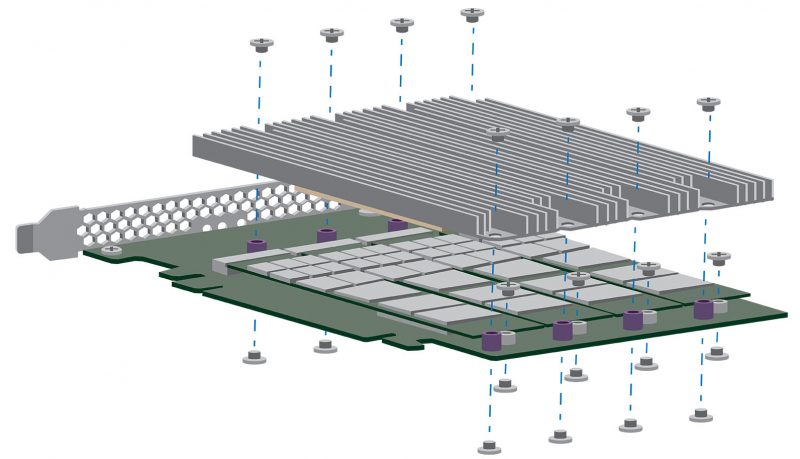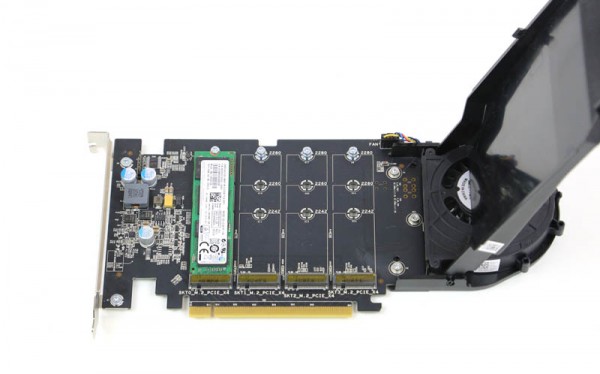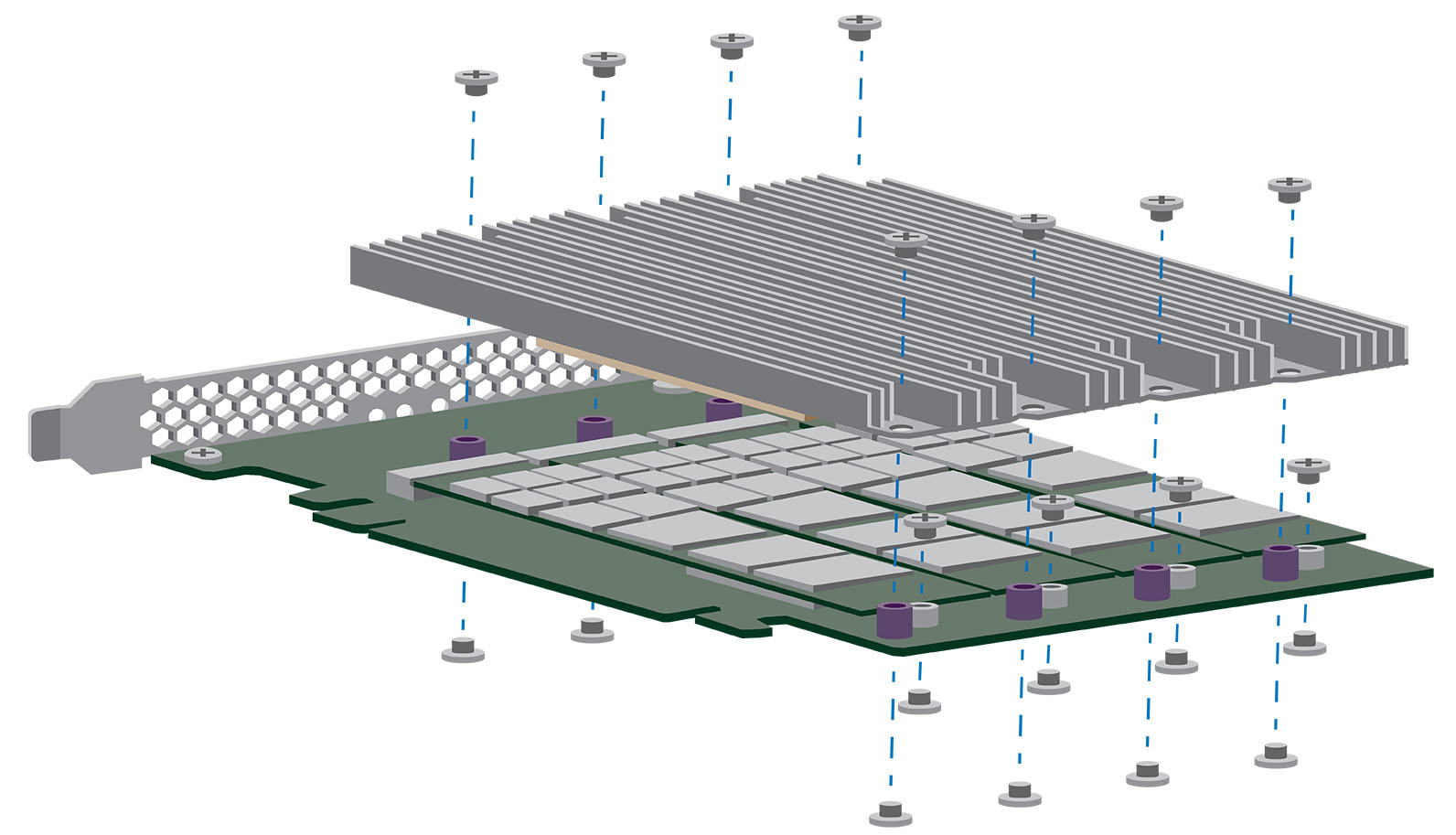Seagate is introducing a full-height, half-length add-in-card that is going to make many STH readers take notice. The Seagate Nytro XP7200 is a PCIe 3.0 x16 card (for bandwidth purposes) that uses four m.2 SSDs to deliver speeds of up to 10GB/s. M.2 SSDs have become a popular form factor due to their small size. They have been used in laptops and micro servers for some time. With a PCIe 3.0 x4 interface for m.2, each is capable (controller and NAND willing) to hit 2.5GB/s each. By combining four m.2 SSDs on one card, Seagate delivers a solution with four volumes and up to 10GB/s bandwidth.

We did ask Seagate during our pre-briefing if a PLX PCIe switch chip was used and we were told it was not. We did request a sample but do not have it on-hand yet. Seagate specs the Nytro XP7200 with Nytro XM1440 modules in the 1TB or 2TB class of devices. Since there are four onboard, the total capacities will reach 3.8TB or 7.7TB. Each Nytro XM1440 has power loss protection on the device making their integration relatively simple.

We have previously seen designs from HP and Dell on adding 4x m.2 SSDs to a PCIe x16 add-in card, but those generally required a PLX PCIe switch chip to be on the motherboard.

If Seagate’s claim is true, this will be an extremely interesting product for STH readers as using low-cost m.2 SSDs to hit 10GB/s in a single slot seems like a winning solution. We are starting to see vendors utilize the compact m.2 form factor to increase storage density. By more densly packing m.2 SSDs, vendors are getting more capacity and performance from the same space. Furthermore, by using m.2 SSDs vendors are able to quickly alter designs to take advantage of new controllers or NAND.





If there’s no PLX chip on the add-in card, won’t you HAVE to have one on the motherboard? Or I guess the PCUe “host”, such as the CPU or SB, must be capable of splitting the lanes itself.
Just confused how these are supposed to work
Evan, that is what I thought but I was told it is not the case. I will see if I can stop by the booth again today at FMS.